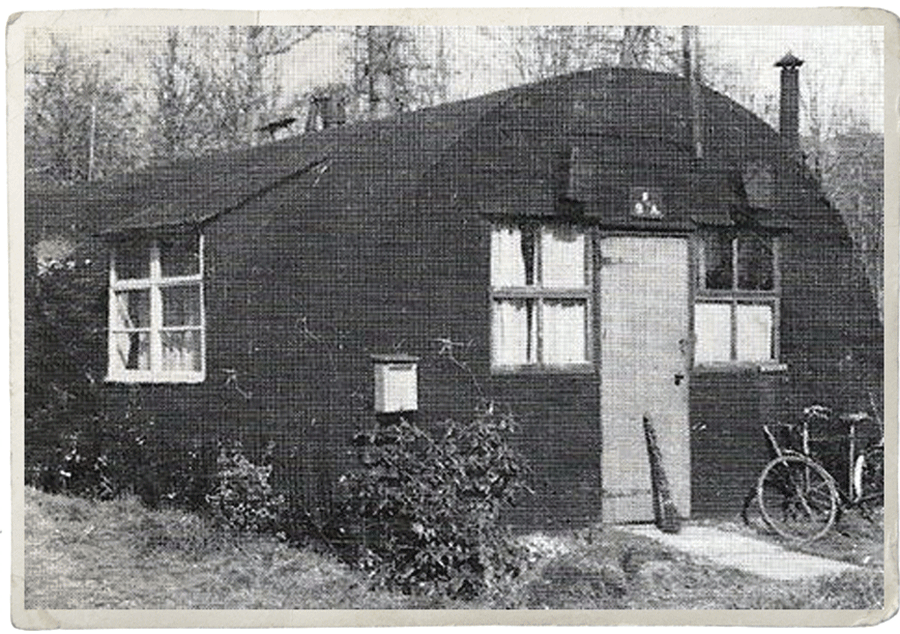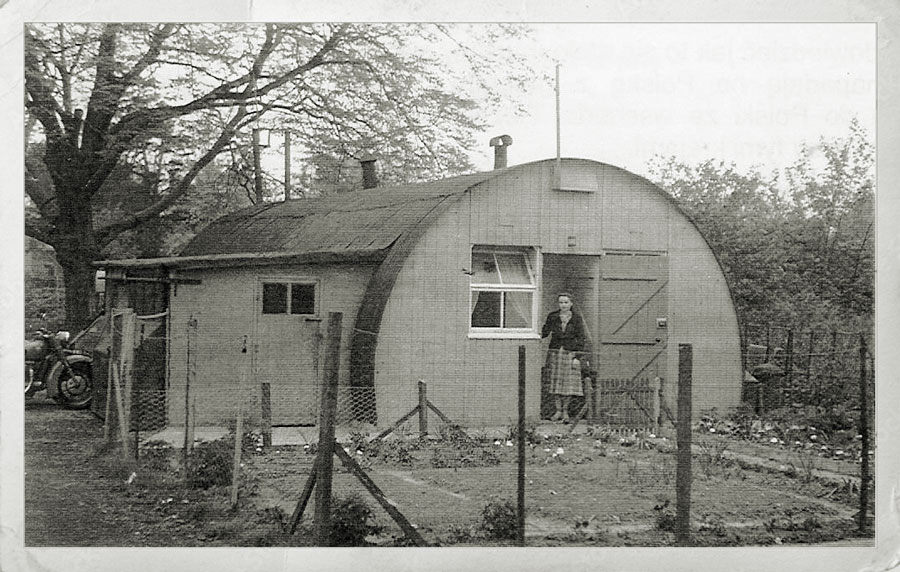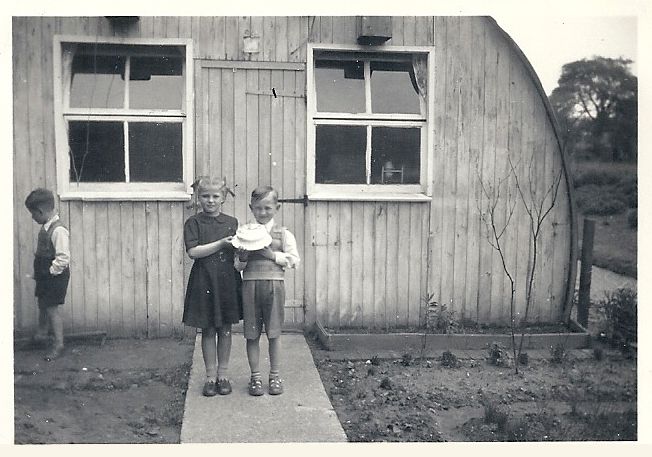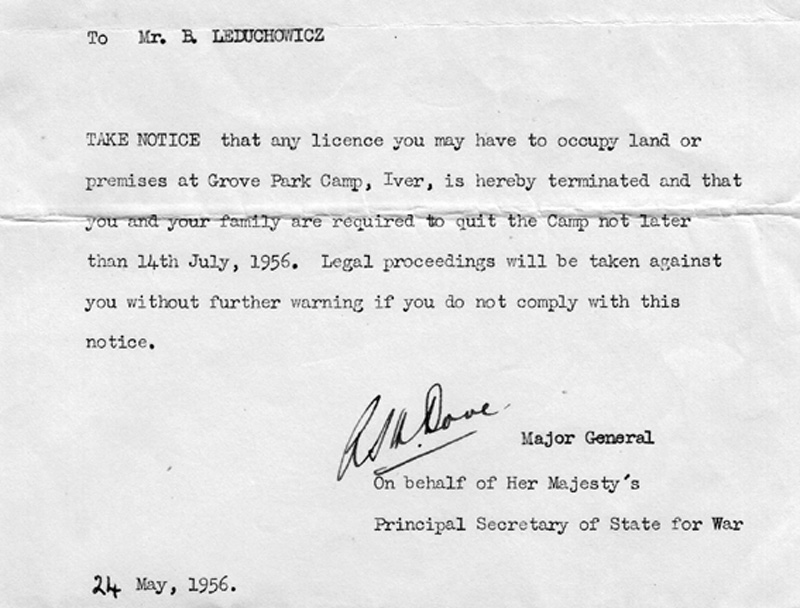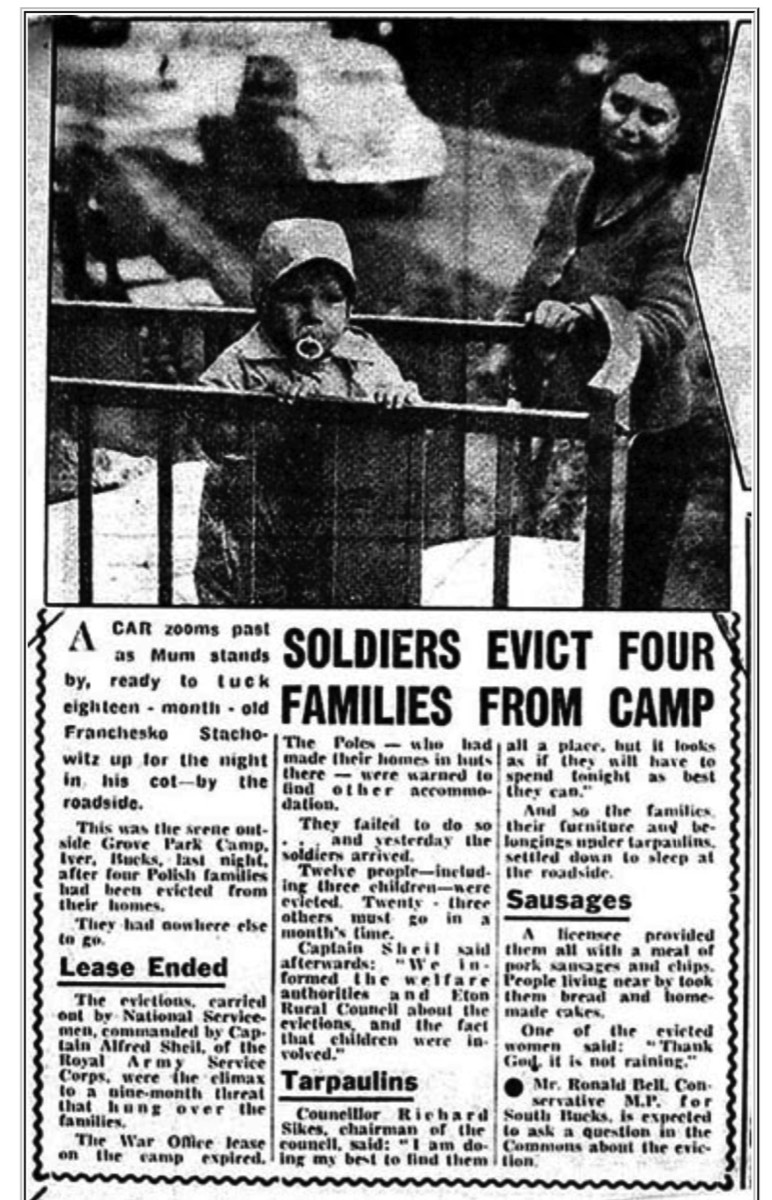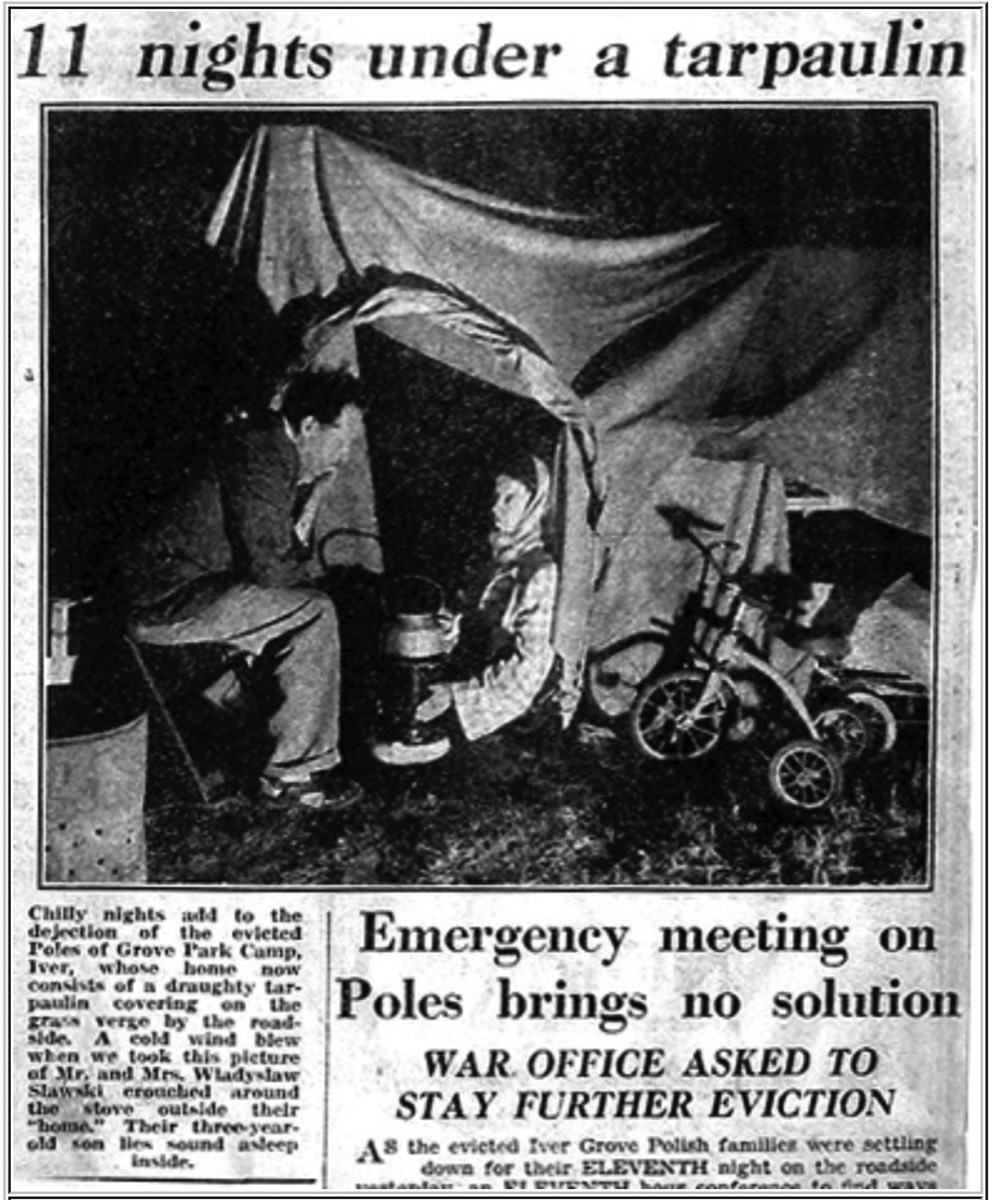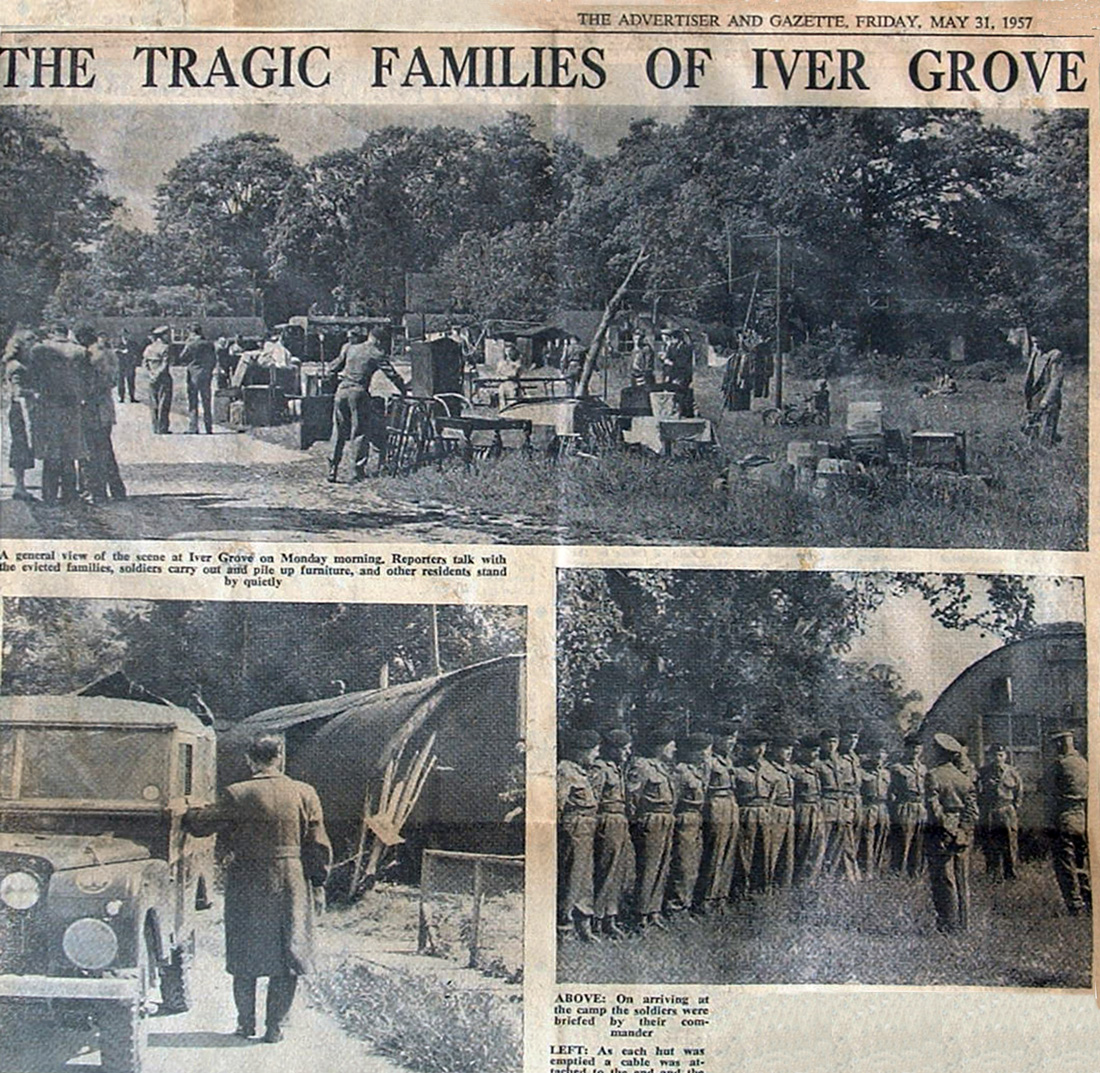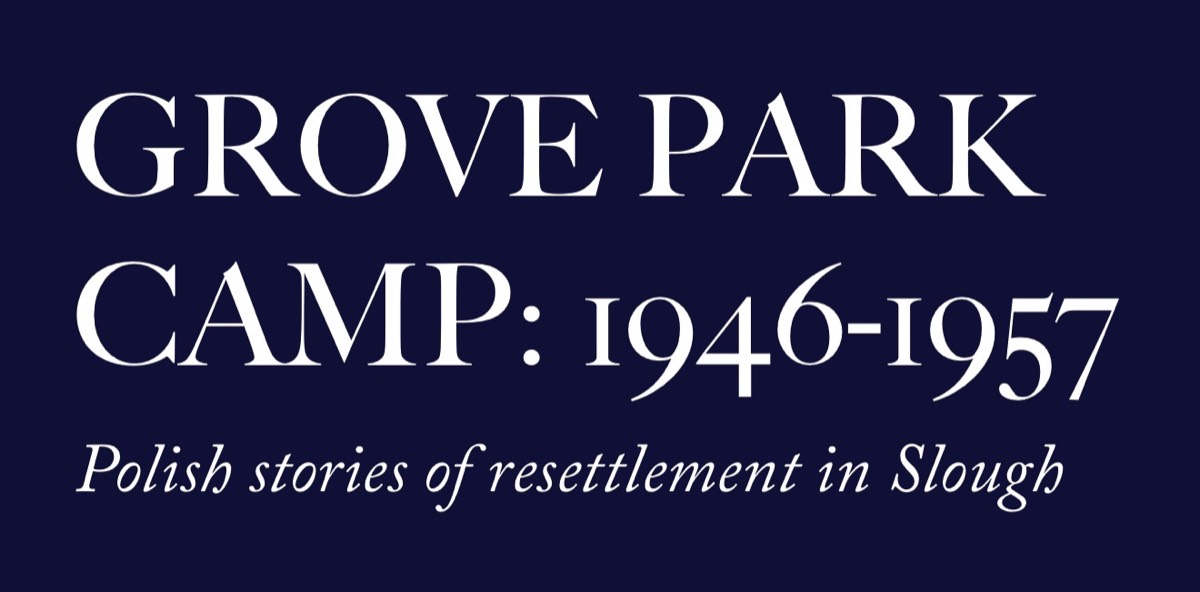
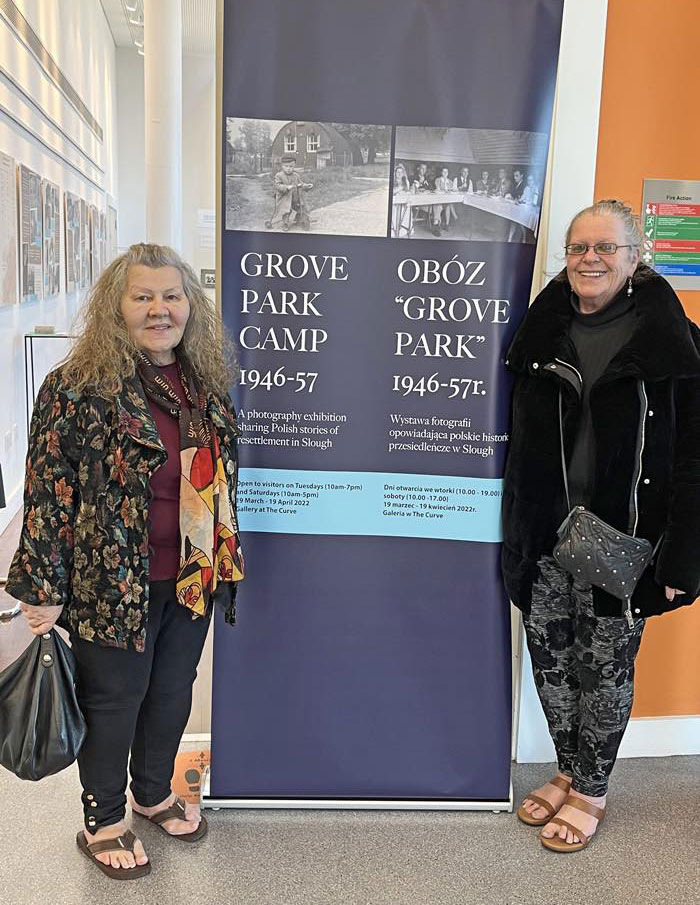
Emilia and her sister Krystyna at the opening of the exhibition ‘Grove Park Camp 1946-57’ which was held in The Curve, Slough, March 2022.
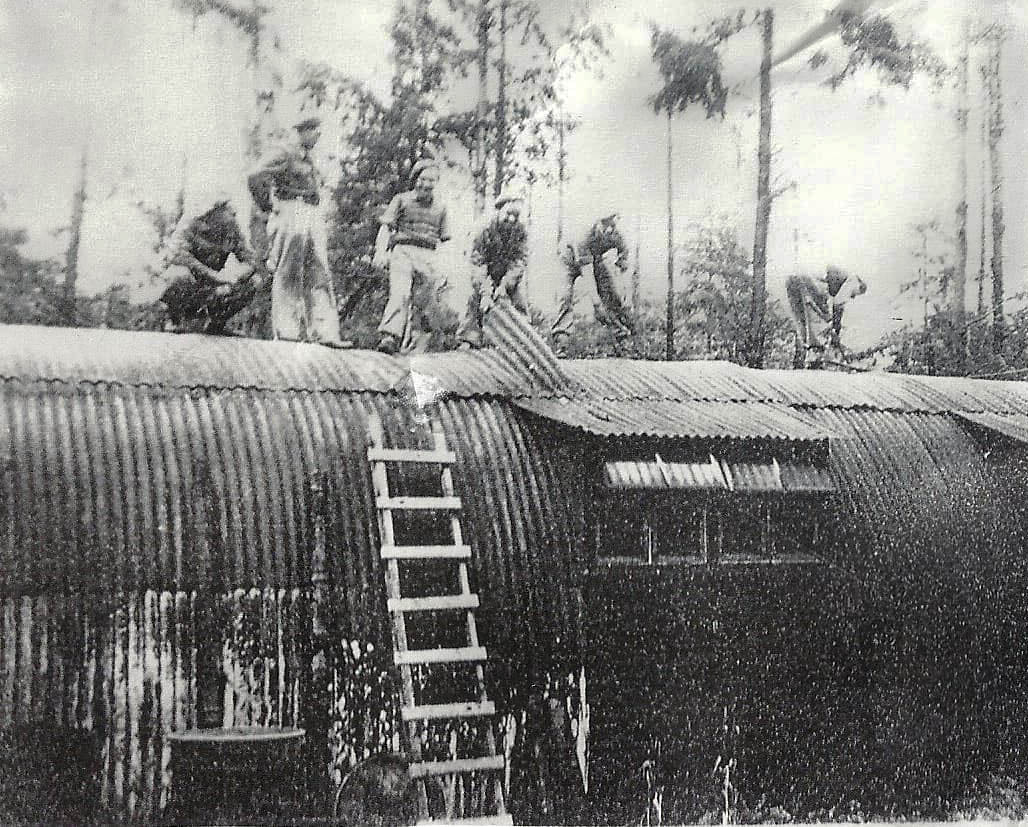
A dilapidated Nissen hut (Hut 1) at Grove Park Camp is repaired by Polish servicemen soon after their arrival in 1946.
In 1946 when the 3rd Carpathian Sapper (Engineer) Battalion of the Polish army were billeted at Grove Park (the grounds of Iver Grove, an early Georgian country house) in Buckinghamshire. It was one of many PRC camps to which the Polish army was assigned until their demobilisation.
On arrival at Grove Park the men found some of the Nissen huts in such a poor state that they quickly set to work making them more habitable.
None of the authorities showed any interest in taking responsibility for the appalling living conditions of the Polish ex-service men and their families living in Grove Park. The MOD with no experience of running family camps was not interested either so to get the camp off their hands, they the leased ten acres of land in Grove Park to the Poles together with the forty-four Nissen Huts which included ablution, laundry facilities and some larger Nissen huts for an annual rent of fifty pounds.
This website tells the story of Grove Park Camp from the perspective of its former residents, who were among the first generation of Polish people to settle in Slough after the Second World War. In the slow process of recovery from the devastation of war Slough was in desperate need of committed workers and, in theory, welcomed the arrival of Polish people.
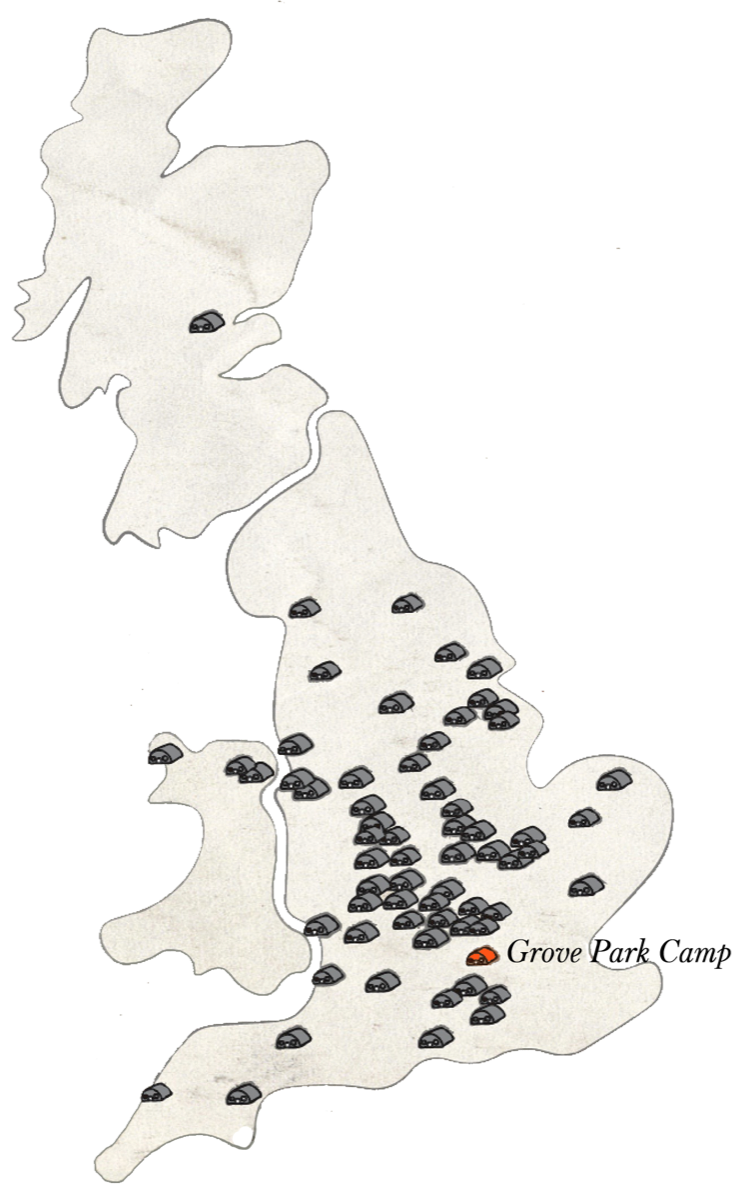
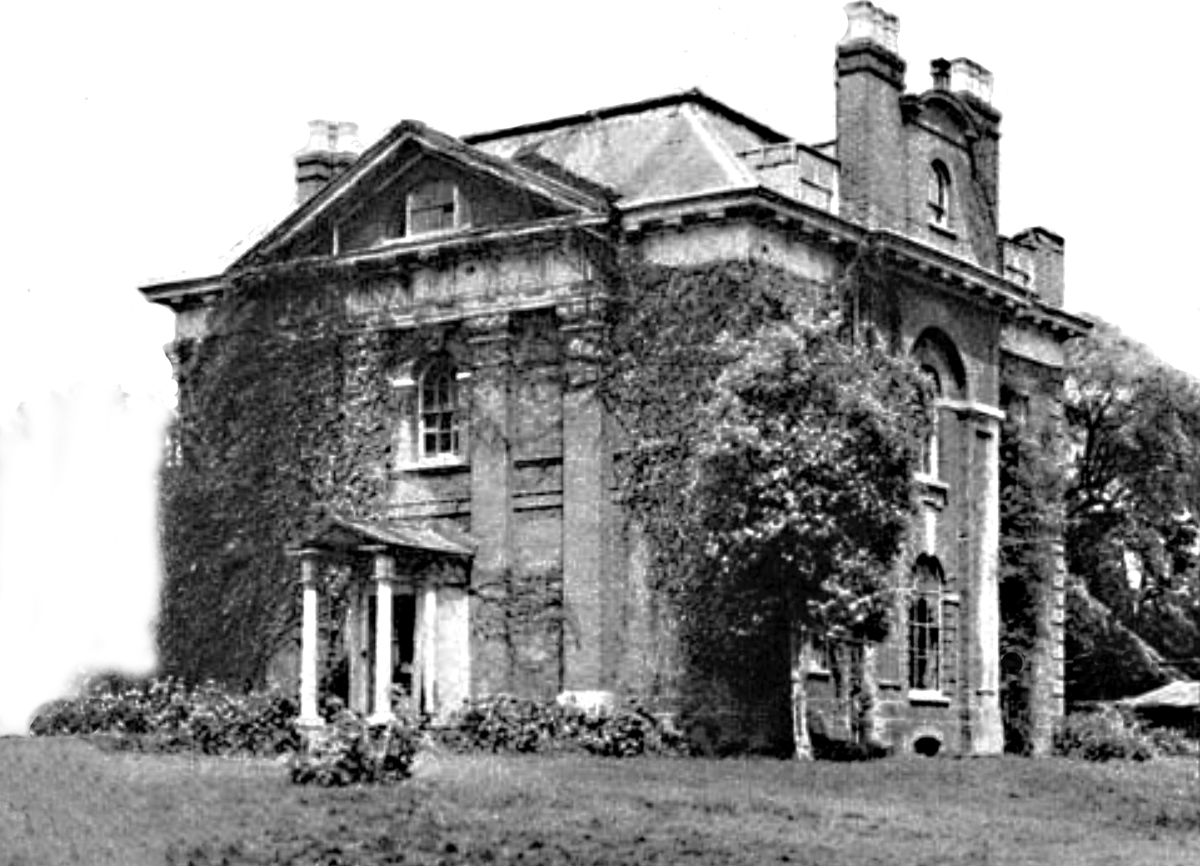
IVER GROVE
Over the years the property became derelict, being smothered in ivy and riddled with dry rot. In 1957 when Grove Park Camp closed it was acquired by the Ministry of Works and was subsequently restored.
In 1961 it was bought by Mr and Mrs James Howie Mitchell. Incidentally, in 1969, it was used by Pinewood Studios as a location for the comedy film ‘Carry On Again Doctor’, and from the 70s onwards was owned by Sir Tom Stoppard and his wife, Miriam. They sold it in 1997.
It is remarkable that the house is still here today. It ran the risk of becoming one of the many hundreds of country houses demolished in the 1950s. It is now Grade II listed.
HUTS AS HOMES

Rent book for Hut 23
THE FAMILIES OF GROVE PARK CAMP
Morowski
Węgrzyn
Patrykus
HUT 2
Olkowicz
HUT 3
Partyczny
Ostasiewicz
HUT 4
Słowi
Kwaskowski
HUT 5
Bernacki
HUT 6
Stadkowicz
HUT 7
Osmenda
Pluszczyk
Majchrazak
HUT 8
Farion
Wojcik
HUT 9
Sawicki
Lesiw
HUT 10
Sławski
Kozior
HUT 12
Fronczak
HUT 13
Raś
Wincza
HUT14
Zyczynski
HUT 15
Zając
Bublik
HUT 16
Glessner
Choinski
HUT 17
Wojtecki
Kurowski
HUT 18
Adam
HUT 20
Kadela
Sobol
HUT 21
Nowagiel
Begacz
Mrowka
Swiatek
Zuba
HUT 23
Fursewicz
HUT 24
Jurkiw
Szulc
HUT 25
Hołdys
Malik
HUT 26
Bandurek
Kozakiewicz
HUT 27
Rak
Huda
HUT 28
Negly
Tomaszewski
HUT 30
Olkowicz
Szymanski
HUT 31
Lachowicz
Mędzela
HUT 32
Lewkowicz
Szandurski
HUT 35
Paszkiewicz
HUT 36
Glessner
HUT 38
Igras
HUT 39
Wasilewski
Zabel
GROVE PARK CAMP: MAP OF FAMILY HUTS
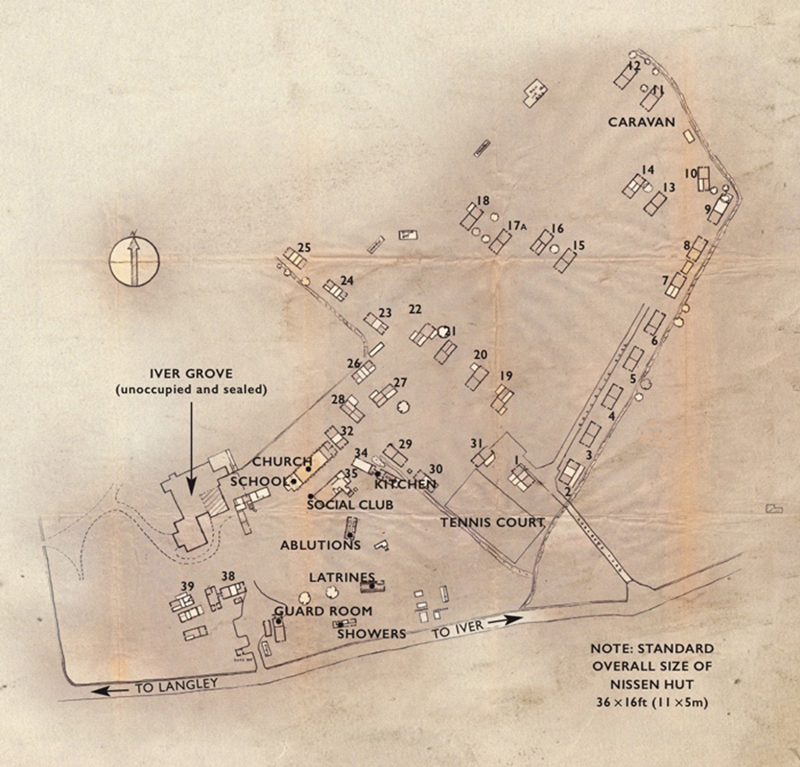
Morowski
Węgrzyn
Patrykus
HUT 2
Olkowicz
HUT 3
Partyczny
Ostasiewicz
HUT4
Słowi
Kwaskowski
HUT 5
Bernacki
HUT 6
Stadkowicz
HUT 7
Osmenda
Pluszczyk
Majchrazak
HUT 8
Farion
Wojcik
HUT 9
Sawicki
Lesiw
HUT 10
Sławski
HUT 11
Kozior
HUT 12
Fronczak
HUT 13
Raś
Wincza
HUT14
Zyczynski
HUT 15
Zając
Bublik
HUT 16
Glessner
Choinski
HUT 17
Wojtecki
Kurowski
Adam
HUT 20
Kadela
Sobol
HUT 21
Nowagiel
Begacz
HUT 22
Mrowka
Swiatek
Zuba
HUT 23
Fursewicz
HUT 24
Jurkiw
Szulc
HUT 25
Hołdys
Malik
HUT 26
Bandurek
Kozakiewicz
HUT 27
Rak
Huda
HUT 28
Negly
Tomaszewski
HUT 30
Olkowicz
Szymanski
HUT 31
Lachowicz
Mędzela
HUT 32
Lewkowicz
HUT 34
Szandurski
HUT 35
Paszkiewicz
HUT 36
Glessner
HUT 38
Igras
HUT 39
Wasilewski
Zabel
DAILY LIFE IN THE CAMP

Anna Mrówka outside their shared hut (no.22) with her children, Staś and Wanda.


Adela and Toni Słowi enjoy a dance.

Grove Park residents pose for a group photograph. From left to right: Piotr and Eugenia Jurkiw (Hut 24), Bonawentura and Anna Fursewicz (Hut 23), and Jan and Zosia Nowagiel (Hut 21).

Pani Jurkiw (far right) and others in the Camp club.

Piotr, Elgenia, Janek and baby Michal Jurkiw.
COMMUNIONS, CHRISTENINGS AND WORSHIP

Outside the church hut following Sunday Mass. Iver Park house can be seen in the background.

Krysia’s first Communion

First Holy Communion of Basia Miśkier with Wanda Mrówka.

Sunday Mass in the Church hut.

Krysia’s first Communion led by Father Świętoń.

Christening of baby Krystynya Fursewicz, held by Kasia Charowska. She is pictured here with her older sister, Emilia holding hands with their father, Bonawentura, and family friend and Godfather Józef Kurowski.
FAMILY LIFE

A Polish/Italian wedding, the union of Florinda and Józef Kurowski

After the Christening of Mario Kurowski

Adela and Antoni Slowi with their Godchild Mario Kurowski

Maria and Janek Kozaiewicz’s wedding reception.

Józef and Florida Kurowski take baby Mario for a stroll around the camp.

The Tkaczuk wedding group.

The Tkaczuk wedding - left to right - Genia Malik, Michal and Anna Tkaczuk, Elgenia Jurkiw with her son little Janek in front.

Michal and Anna Tkaczuk with their first child.

Pani-Kurowska.

Rysiek.

Wisia Bandureck and Krystyna Furewicz.

Mila and Krysia

Krisia, Czesz, and Mila

Janek Lawor, Zosia and Janek Nowageil

Tony Slowi.

Tony Slowi and friends.


-1947.jpg)


